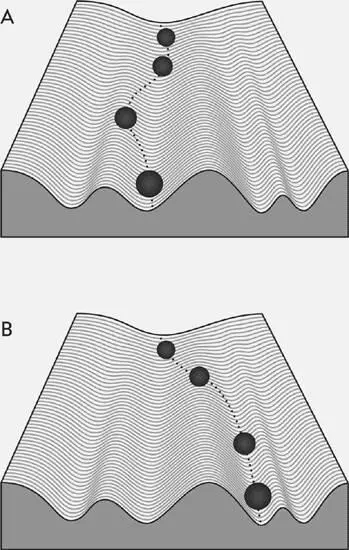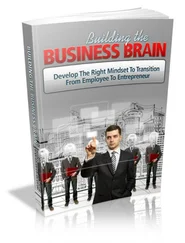Bruce Hood - The Domesticated Brain - A Pelican Introduction (Pelican Books)
Здесь есть возможность читать онлайн «Bruce Hood - The Domesticated Brain - A Pelican Introduction (Pelican Books)» весь текст электронной книги совершенно бесплатно (целиком полную версию без сокращений). В некоторых случаях можно слушать аудио, скачать через торрент в формате fb2 и присутствует краткое содержание. Год выпуска: 2014, ISBN: 2014, Издательство: Penguin Books Ltd, Жанр: Старинная литература, на английском языке. Описание произведения, (предисловие) а так же отзывы посетителей доступны на портале библиотеки ЛибКат.
- Название:The Domesticated Brain: A Pelican Introduction (Pelican Books)
- Автор:
- Издательство:Penguin Books Ltd
- Жанр:
- Год:2014
- ISBN:9780141974873
- Рейтинг книги:4 / 5. Голосов: 1
-
Избранное:Добавить в избранное
- Отзывы:
-
Ваша оценка:
- 80
- 1
- 2
- 3
- 4
- 5
The Domesticated Brain: A Pelican Introduction (Pelican Books): краткое содержание, описание и аннотация
Предлагаем к чтению аннотацию, описание, краткое содержание или предисловие (зависит от того, что написал сам автор книги «The Domesticated Brain: A Pelican Introduction (Pelican Books)»). Если вы не нашли необходимую информацию о книге — напишите в комментариях, мы постараемся отыскать её.
The Domesticated Brain: A Pelican Introduction (Pelican Books) — читать онлайн бесплатно полную книгу (весь текст) целиком
Ниже представлен текст книги, разбитый по страницам. Система сохранения места последней прочитанной страницы, позволяет с удобством читать онлайн бесплатно книгу «The Domesticated Brain: A Pelican Introduction (Pelican Books)», без необходимости каждый раз заново искать на чём Вы остановились. Поставьте закладку, и сможете в любой момент перейти на страницу, на которой закончили чтение.
Интервал:
Закладка:
As for Bradley Waldroup, was it right for him to be treated more leniently? He certainly had an abusive childhood, but probably no greater than other males in that trailer park in a socially deprived area of Tennessee. A third of them presumably also carried the gene. At the time, Waldroup was drunk and we know that alcohol impairs our capacity to regulate rage and anger arising from the limbic system. But was he accountable for his actions?
What is clear is that it was the evidence for a warrior gene that persuaded members of the jury to find Waldroup not guilty of murder even though it is clear that they did not fully understand the nature of gene-environment interactions. After the Waldroup outcome, one might think that raising the presence of the warrior gene and abusive childhood would make for a good defence strategy in the law courts. However, there is another way of seeing the argument. One could argue that those with a genetic predisposition towards violent crime should not be let off more lightly but rather punished more severely. This is because they are more likely to reoffend and so the deterrent should be even harsher. Warrior genes and abusive childhoods are risk factors that make some more inclined to violence, but then again, punishment and retribution are also factors that reduce the likelihood of committing crimes. The decisions we make throughout our life represent the interaction of biology, environment and random events. Deciding which is more important is the job of society operating through its laws and policies, but it would be wrong to think that the answer is simple.
The landscape of life
It is a cliché but we often talk about life as a journey with many forks and turnings. Just think about where you are today and how you got here. Did you know ten years ago where you would be today? Although some things in life are certain (death and taxes) and some are likely, many events are unpredictable. And some leave a lasting impression.
As we develop from a simple ball of cells into an animal made up of trillions of cells, the process is guided by instructions shaped by natural selection over the course of evolution and encoded in our genes. However, the genome is not a blueprint for the final body but rather a script that can vary depending on events that take place during development. These are not only events outside the womb, but also those within the unfolding sequence of body building, which explains why identical twins end up different despite sharing the same genes. They may start out with the same genome, but random events can set them off on different pathways as the body is being constructed. This explains why there are increasing differences observed in genetic methylation for identical twins the older they become. Even cloned fruit flies raised in the same lab-controlled environment should be absolutely identical and yet have different arrangements in their brains. When you consider the complexity of neural networks and the explosion of synapses with googols of connections, it seems obvious that no two brains could ever be the same.
Despite the diversity in brains that is inevitable during development, evolution still produces offspring that resemble their parents more than they resemble another species. The majority of genetic information must be conserved and yet remain flexible enough to allow for individual variation arising from events that occur during the developmental process. One way to consider the influence of genes and environment is to think about the journey through life as an epigenetic landscape.
In 1940, the brilliant British polymath Conrad Waddington used a metaphor of a ball rolling down a corralled landscape made of up troughs and valleys of different depth. The diagrams overleaf represent two paths of development in two individuals (A and B) who have the same starting genotype, as in the case of identical twins. These two individuals therefore inherit the same probability of developing a certain phenotype – the expression of those genes into characteristics that emerge over one’s lifetime. However, they may have different actual phenotypic end points, determined by chance events and environmental effects, especially at critical points. At each junction, development can take a different path but whether it stays on course depends on the depth of the gully. Some gullies or canals are very deep, so the ball has no option but to follow that trajectory and it would take a mighty upheaval to set it on another course. These are the genetic pathways that produce very little variation in the species. Other canals are shallower, so that the path of the ball could be more easily set on another route by a slight perturbation. These are aspects of development that may have a genetic component but outcomes can be easily shifted by environmental events.

Figure 7: Waddington’s epigenetic landscape
(After Kevin Mitchell, PL.S Bristol © 2007)
Waddington’s metaphor of canalization helps us to think about development as a probabilistic rather than deterministic process. Most of us end up with two arms and two legs but it is not inevitable. Something dramatic during foetal development could produce a child with missing limbs, as happened during the 1960s when the drug thalidomide was given to pregnant women to prevent morning sickness. Other individual differences are much more susceptible to the random events in life that can set us off on a different course. This can happen at every level, from a chance encounter with a virus as a child to growing up in an abusive household.
Unravelling the complexity of human development is a daunting task and it is unlikely that scientists will ever be able to do so for even one individual, because the interactions of biology and environment are likelihoods and not certainties. There are just too many ways that the cards could stack up. More importantly, as the vernacular saying goes, ‘Shit happens’, which is a very succinct and scientifically accurate way of saying that random events during development can change the course of who we become in unpredictable ways.

One day a scorpion and a frog met on a riverbank. The scorpion asked the frog to carry him across the water on his back because he could not swim. ‘Hold on,’ said the frog, ‘How do I know that you won’t sting me?’ ‘Are you insane?’ the scorpion replied. ‘If I sting you, then we will both die.’ The frog, reassured by this, agreed to carry the scorpion on his back across the river. Halfway across, the frog felt the sharp, fatal puncture from the scorpion’s tail. ‘Why did you do that? Now we are both doomed,’ cried the frog, overcome by venom, as they both began to sink below the water. To which the scorpion replied, ‘I can’t help it. It’s in my nature.’
The story of the scorpion and the frog has been retold for thousands of years. It is a tale about urges and impulses that hijack our behaviours despite what is often in our best interests. We like to believe that we are in control and yet our biology sometimes gets in the way of what is best for us. As animals with the capacity to reason, we think that we are capable of making informed decisions as we navigate the complexity of life. However, many of the decisions we make are actually controlled by processes that we are not always aware of or, if conscious, seem beyond our volition.
Impulses are the drives behind the four Fs that we evolved to keep us alive long enough to reproduce. However, impulses and drives are not always appropriate – especially when they conflict with the interests of others. After all, there is a time and a place for everything. The impulses and drives that served us so well in our early evolution became problems in the modern era as we became domesticated. Being domesticated includes having to conform to social rules of what is acceptable in polite company. We may be highly evolved animals with more flexible behaviours than scorpions, but we also retain automatic urges that, unless regulated, can lead to self-defeat.
Читать дальшеИнтервал:
Закладка:
Похожие книги на «The Domesticated Brain: A Pelican Introduction (Pelican Books)»
Представляем Вашему вниманию похожие книги на «The Domesticated Brain: A Pelican Introduction (Pelican Books)» списком для выбора. Мы отобрали схожую по названию и смыслу литературу в надежде предоставить читателям больше вариантов отыскать новые, интересные, ещё непрочитанные произведения.
Обсуждение, отзывы о книге «The Domesticated Brain: A Pelican Introduction (Pelican Books)» и просто собственные мнения читателей. Оставьте ваши комментарии, напишите, что Вы думаете о произведении, его смысле или главных героях. Укажите что конкретно понравилось, а что нет, и почему Вы так считаете.











